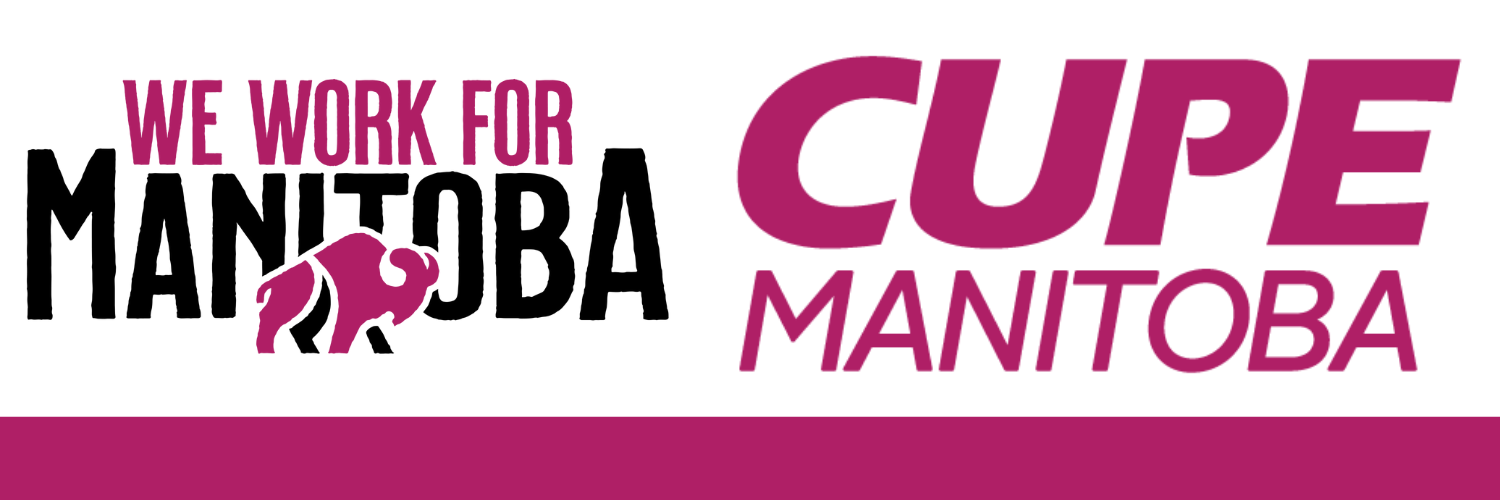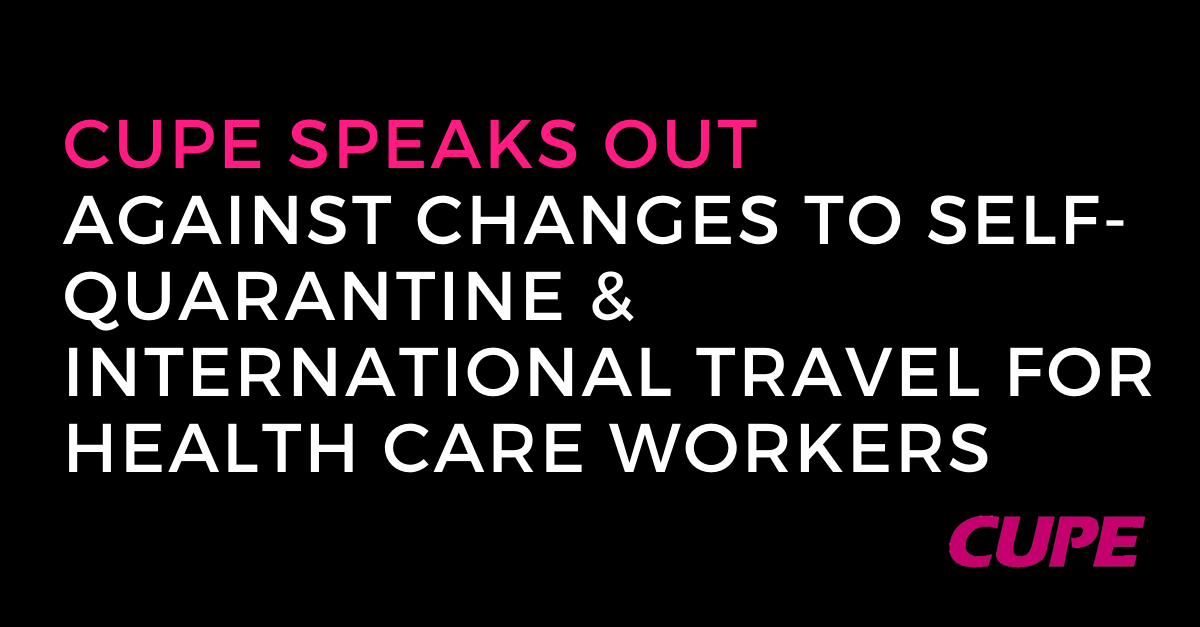WINNIPEG – The Provincial Government’s COVID-19 Update #19 issued on March 18th directs
employees who have arrived from international travel since March 15th to report to work. This is a
significant change from previous directions that all Manitobans returning from international travel
must self-quarantine.
This raises concerns because COVID-19 symptoms may not present themselves until 2 to 14
days after contact.
CUPE believes this is putting patients and staff at risk by forcing potentially exposed individuals
into environments where there is the potential to spread the virus.
CUPE is aware of this occurring in both personal care homes and hospitals, and the directive
could also apply to home care, putting our most vulnerable citizens at risk of infection.
CUPE issued a letter to the health authorities, demanding all health authorities do the following:
• Offer a fully paid leave for staff returning from international travel for the full fourteen (14)
day self-quarantine period.
• Never order a potentially exposed staff member into work during the self-quarantine
period.
• Fully pay all employees – including home care workers – for all illnesses, quarantines and
isolations without a waiting period.
If government is worried about lack of staffing, they shouldn’t potentially make matters worse by
asking employees returning from international travel to come to work. This is indicative of a
health care system that, prior to the COVID-19 pandemic, was already short staffed – especially
after the provincial government’s restructuring and bumping of positions.
During this pandemic Manitoba families are pulling together to self-quarantine and take care of
each other – health authorities need to lead by example instead of putting people at risk.
The Canadian Union of Public Employees is Canada’s largest union representing more than
700,000 members. In Manitoba, CUPE represents approximately 37,000 members working in
health care facilities, personal care homes, school divisions, municipal services, social services,
child care centres, public utilities, libraries and family emergency services.

